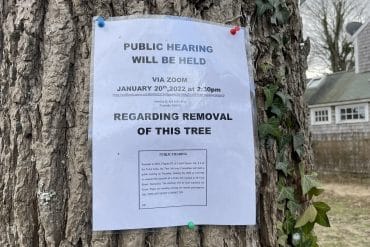 No one is likely to confuse Nantucket with Churchill Downs. After all, this was an island built by whalers, not jockeys. Just the idea of horse racing on Nantucket can seem like a long shot. But no one ever told that to Rupert Warren, who in 1934 was considered one of the island’s best harness horse racers. In fact, Warren set a track record on the last race to ever be run at the old Fairgrounds, which later inspired him to paint his house on Old South Road the conspicuous colors of his racing silks: gold and green. While Nantucket still has a strong equestrian community today, it’s furlongs away from the exhilarating sport that galloped through the island in the late nineteenth century.
No one is likely to confuse Nantucket with Churchill Downs. After all, this was an island built by whalers, not jockeys. Just the idea of horse racing on Nantucket can seem like a long shot. But no one ever told that to Rupert Warren, who in 1934 was considered one of the island’s best harness horse racers. In fact, Warren set a track record on the last race to ever be run at the old Fairgrounds, which later inspired him to paint his house on Old South Road the conspicuous colors of his racing silks: gold and green. While Nantucket still has a strong equestrian community today, it’s furlongs away from the exhilarating sport that galloped through the island in the late nineteenth century.
Competitive harness racing on the island was a product of the Nantucket Agricultural Society, founded in 1856. Each year from 1856 to 1934 the society sponsored a fair and offered monetary premiums for the best livestock, fruits, vegetables and fancy articles. Horses were a highlight of the fair, with cash premiums offered for the best family horses, walking horses, and draught horses. Gentlemen and ladies would demonstrate their equestrian skill out on the Agricultural Society’s track where “the track was open to all, and numbers availed themselves of the opportunity to try the speed of their steeds.” Soon thereafter in 1866, harness racing became the annual fair’s favorite event, held at the Fairgrounds south of town.
Introduced to the island by “two gentlemen from abroad,” a small, two-wheeled vehicle called a sulky was harnessed to a horse for a mile-long dash around an oval course. The goal of the early races at the Fairgrounds track was to complete the course in less than three minutes. False starts, spills and other incidents kept fans on their toes as they cheered for the local horses often competing against off-island racers. One racing fan reminisced about the early races in the Inquirer and Mirror in 1938: “…If the race was decided in the home stretch the uproar would be fairly deafening. The whip would come into play. Trotters lifted feet to incredible heights and pacers seemed to slink nearer the ground in the final spurt.”
As the island put more and more distance between its agricultural past and the modern age, the Nantucket Agricultural Society disbanded. In 1934, the last race was held at the Fairgrounds, and the property was sold. A love of harness racing brought the sport back to the island in 1965. The recently formed Miacomet Raceway Association held its first race at the new quarter- mile racetrack, which was created at the end of Somerset Lane by avid pony racer Gilbert “Gibby” Burchell and raceway grounds owner Ralph Marble. Hundreds of people attended the weekly races at Miacomet to see fast and furious half-mile harness races run by standardbreds, a breed of horse generally fifteen to sixteen hands in height (less than sixty-four inches from the ground to the horse’s withers.)
Nantucket harness racers competed off-island beginning in 1968, when six drivers took their horses and sulkies to Orchard Downs Raceway in Lakeville, Massachusetts, beginning an annual tradition of “Nantucket Day” at the track. In a field that totaled sixty entrants, the Nantucket group won fourteen ribbons, two trophies and three first-place money prizes. Members of the Bay State Trotters Association who raced at Orchard Downs reciprocated and traveled to Nantucket each summer to compete against the island horses. Beginning in 1967, Miacomet Raceway sponsored an annual two-day Miacomet Fair with horse races, a dog show and an antique car parade. More and more events were added every year, including a demolition derby in 1978. A separate race weekend was devoted to harness racing against off-island competitors, but the number of local harness racing enthusiasts dwindled as land prices soared.
In 1981, Ralph Marble sold the Miacomet Raceway and surrounding area to Three M Realty Trust. Although new owners allowed racing to continue as long as the land was undeveloped, after eighteen seasons the sport of harness racing on Nantucket ended. Soon, a new residential neighborhood popped up where the trotters and pacers once delighted the crowds. Today, when walking around what used to be the old race grounds, it’s hard to imagine horses trotting neck and neck to a photo finish. But if you listen real close, you might just catch the faint clapping of the crowds and the hooves of ponies past.





